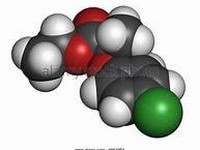procyclidine hydrochloride

CLINICAL USE
Control of extrapyramidal symptoms Acute dystoniasDOSE IN NORMAL RENAL FUNCTION
Oral: 2.5–10 mg 3 times a day; maximum 60 mg dailyAcute dystonias: IM/IV: 5–10 mgPHARMACOKINETICS
DOSE IN RENAL IMPAIRMENT
GFR (mL/MIN)
DOSE IN PATIENTS UNDERGOING RENAL REPLACEMENT THERAPIES
IMPORTANT DRUG INTERACTIONS
Potentially hazardous interactions with other drugsADMINISTRATION
Reconstition
–Route
IV, IM, oralRate of Administration
Bolus over 3–5 minutesComments
–
See how to identify renal failure stages according to GFR calculation
See how to diagnose irreversible renal disease
Home








